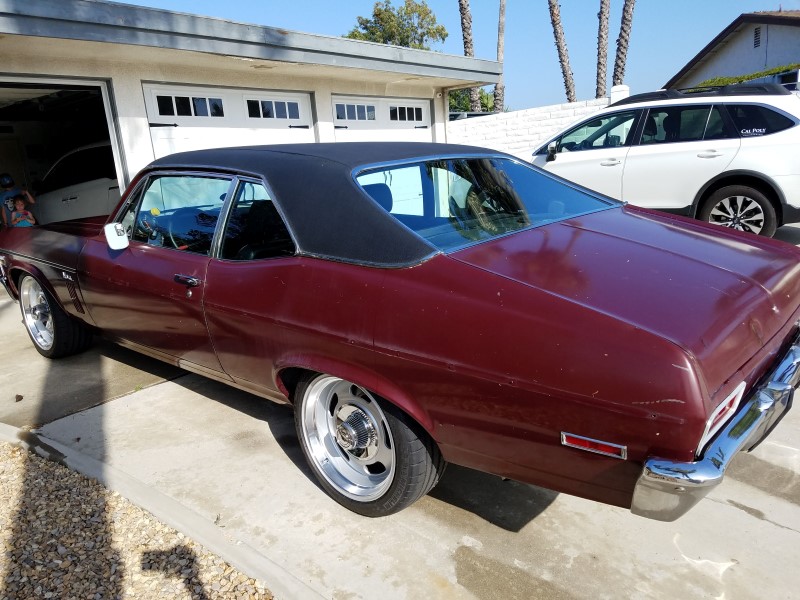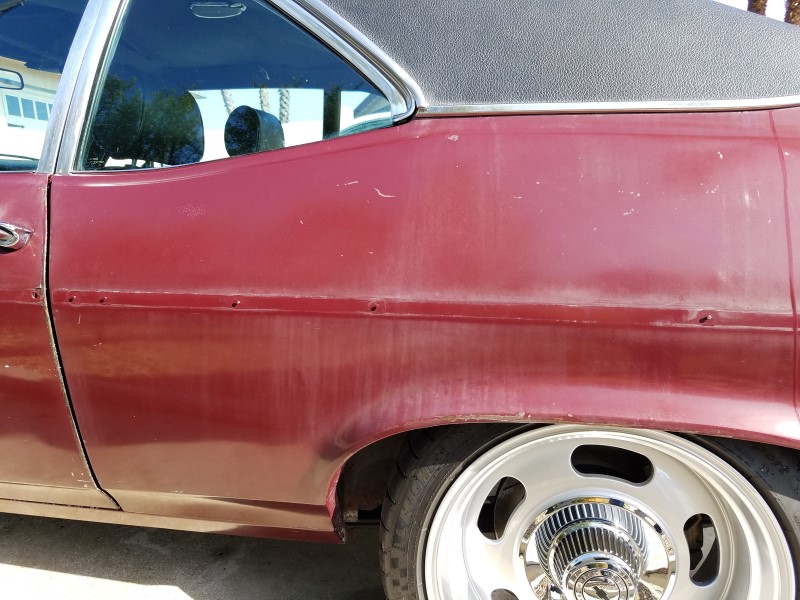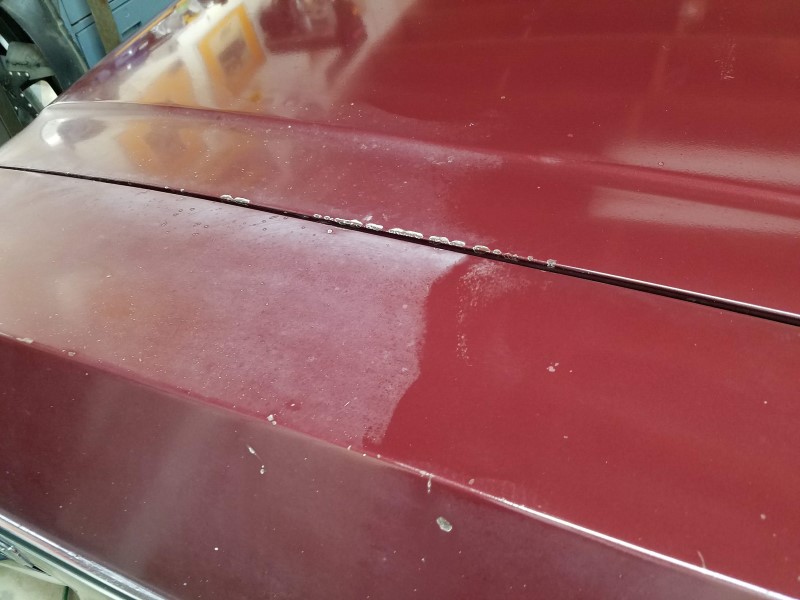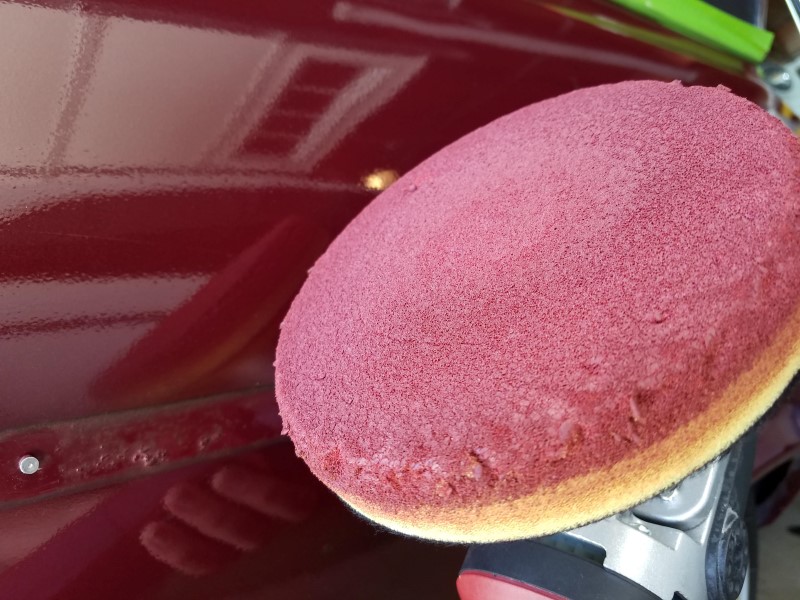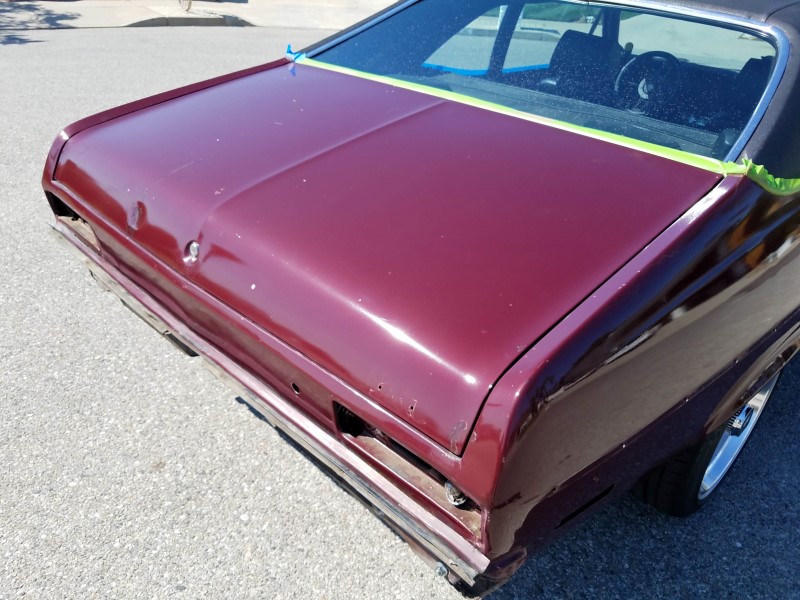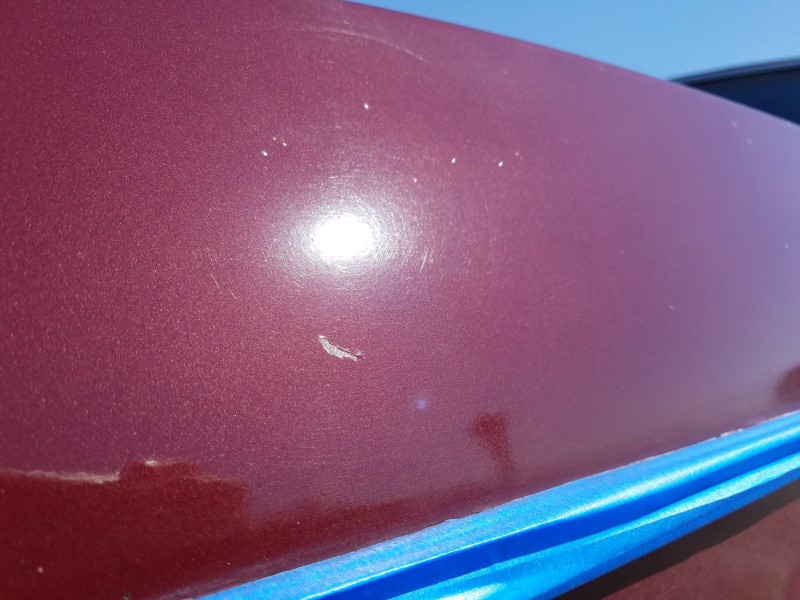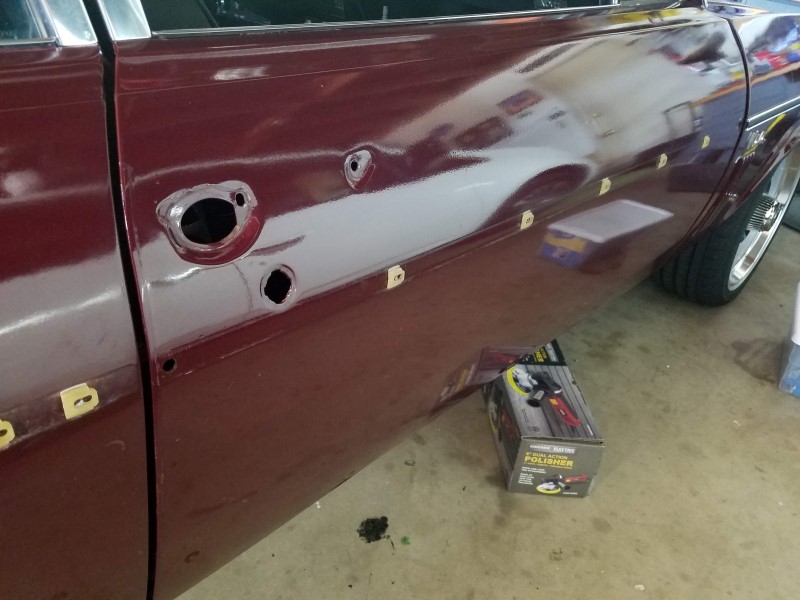Step 3: Compound ~ SKIP ~
On Mike's advice, I decided to skip compounding (for now) and start by seeing what I could accomplish with polish alone. Beyond what Mike said in this thread, something I have heard from him and others over-and-over is to:
"Use the least aggressive method that gets the job done!"
Before I started this project, I felt like I had nothing to lose. I wasn't so concerned about being overly aggressive and possibly damaging some areas of the paint,
because I assumed the car would need to be repainted at some point anyway. But now that I've seen the diamond in the rough, I realize I had no idea what was under there. Now I am going to be more conservative with my approach. So let's skip to the next step...
Step 4: Polish
I decided to start on one of the worst areas on the car - the quarter panel. Rain gutters and trim direct runoff from rain or washing right over the middle of the quarter panel, so this area had a considerable amount of chalky oxidation and/or sediment buildup. Some of it came off during the clay bar and conditioning steps, but it was still pretty bad. I started by taping out a test area with blue painters tape to protect the trim.
Finally I could try out my new toy - a Porter cable style 6" dual action polisher. I have used electric angle grinders, die grinders, saws, and other motorized rotary equipment in the past. This unit is very similar in size, design, power, and noise to a 4" angle grinder - it just uses a different head and has speed control. The "dual action" of this unit refers to the combination of a rotating motion (simple spinning, i.e. the pad rotates around it's center) and an orbiting motion (the i.e. center of the pad is moving in an orbit). This combination is what makes DA polishers safer to use than rotary polishers and a good choice for a beginner like me.
I attached a Lake Country 5" backing plate and then a Lake Country 6" x 7/8" white foam polishing pad. The backing plate simply screws on. The pad attaches very securely with a hook & loop system. Next I shook up my bottle of Maguiars M205 polish and put 5 dime size dollops on the pad. Then, with the polisher OFF, I "patted out" the polish to distribute it around my test area. Next I turned the polisher on at a very slow speed to spread the polish across the whole test area. Finally I cranked up the speed and started polishing. I ran horizontal passes, overlapping by about 50%, then vertical passes again overlapping by 50%, and repeated until I had a total of 5 passes (3 horizontal, 2 vertical). I applied only a little pressure to the head of the polisher. Once done, I wiped the polish from the surface with a microfiber towel using linear movements. This worked very well on the non-oxidized areas of the paint, but still left some faint foggy trails from the water runoff. So I went back over it a second time using 6 more passes (3 horizontal, 3 vertical) and the same light pressure.
Here is a video showing the polishing process and the resulting before & after finish after a total of 11 passes with polish.
Here are some before and after "50/50" photos after just the first 5 passes. The right side was washed, clayed, and hand conditioned with Maguiars no 7. The left side was the same plus DA polished 5 light pressure passes with M205. You can see there are still some rain trails / oxidation here after 5 passes. The video above shows the before & after for 11 passes and it's a lot better than the photos below.
I extended the work area to the rest of the top quarter panel, working in roughly 1x3 ft sections, and here's what I ended up with. I haven't yet polished the top few inches of the quarter panel immediately under the vinyl top/trunk/windows. My plan is to use the smaller 3" Griots polisher to do those areas (it's still in transit).

Even after 11 passes, I could still detect some oxidation trails (although faint) near the bottom of this area that don't show so well in the photos or video. So I went back another 4 passes in the affected areas only and this seemed to do the trick - but it was dark and the lighting wasn't great, so I may have to revisit this area when I get back to work. All in all the non oxidized areas looked good after around 5 or 6 passes and the heaviest oxidation required at least 15 passes with light pressure and M205 to clean up. Would it have been better to compound those areas first? I imagine it would have at least been faster, but I don't mind taking more time. I think I will continue to just polish the car and skip the compound step altogether unless I find defect areas that the polish wont fix.
I am very happy with the results. My only misgiving is that the area immediately next to the side trim did not polish quite as well as the rest of the panel. If you have any tips on how best to run the polisher against edges, that would be much appreciated. I tried sneaking up lightly on the edge as well is pressing into the edge, but neither seemed to get the last 1/4" completely fog-free. If all else fails I may remove the side trim in the future and give these areas a thorough polishing.
Between each application of polish, I cleaned my pad "on the fly" by running the DA with the pad in a terry cloth. By gripping the pad within the terry cloth, I was able to transfer spent product and paint into the terry cloth, readying the pad for further polishing. This seemed to work well and allowed me to continue work without washing the pad - we'll see if it's adequate when I do more sections of the car. I learned this method watching Mike's video.
That's all I had time for last night, so I peeled the pad off my polisher and took it to the kitchen to wash. Look at all that heavily paint-tinted spent polish! I am really curious how much of that is removed paint vs. spent polish. My understanding is it's mostly spent polish, but the very small amount of removed paint gives it a strong tint.
Hot water, a little unscented dawn soap, and working the pad with my thumbs took care of that.
Once clean, I squeezed water out of the pad and left it out to finish drying. I only bought one of these pads, so I hope it lasts for the whole car.




















